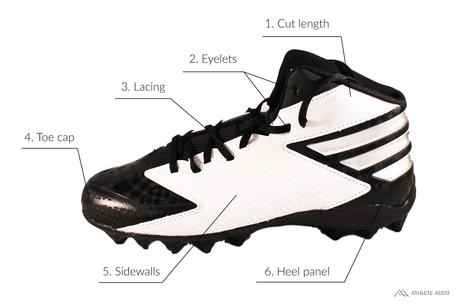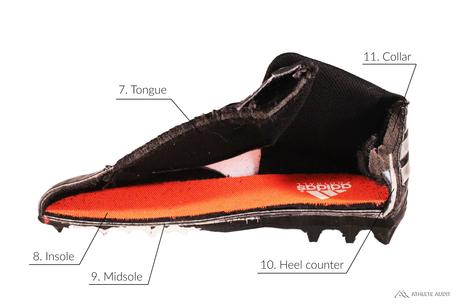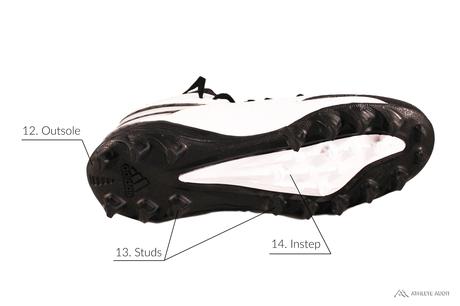Parts of a Football Cleat



- Cut length – Football cleats can come in low-cut, mid-cut, and high-tops, each with varying levels of mobility and ankle support
- Eyelets – Holes near the top of the upper keeps laces in place
- Lacing – Traditional laces are most common although some cleats may have ankle straps for support
- Toe cap – A tough toe cap helps to increase durability and provide additional protection
- Sidewalls – The sidewalls of football cleats are very rigid to provide lateral support and protection
- Heel panel – The section of the shoe that covers the heel
- Tongue – Padded and comfortable
- Insole – The footbed of a shoe that helps to provide comfort and support and can sometimes be removable
- Midsole – A thin but stiff midsole allows you to feel the ground without pressure points from the studs
- Heel counter – A hard plastic insert located behind the heel that keeps the heel from collapsing
- Collar – A padded collar helps to keep your foot in place while increasing comfort
- Outsole – Often made of molded plastic or rubber, the outsole houses the studs
- Studs – Strategically placed studs provide traction on football fields; can be made of either hard plastic or rubber
- Instep – The arched middle area of the shoe

